2 Reasons Sellers Should (Still) Offer to Pay a Commission to Buyers Agents
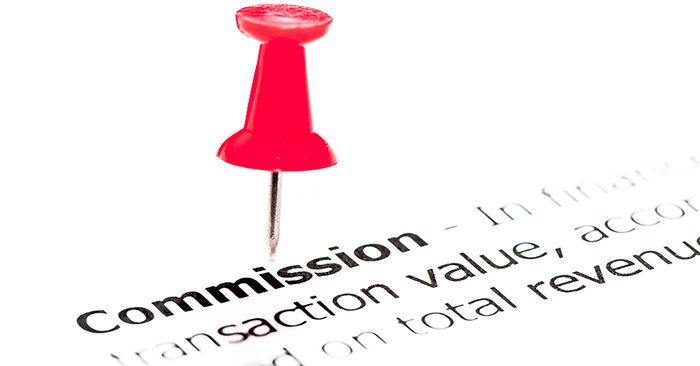
If you’ve been planning on selling your house, or are currently in the middle of doing so, you’ve probably heard that there will be some changes in how your home can be listed and marketed, with regard to a commission being offered (or not) to buyers’ agents.
While some listing agents may already be implementing the changes ahead of time, as of August 17, 2024, your agent cannot include an offer to compensate buyers’ agents on a Multiple Listing Service (MLS), which is a local marketplace used by both buyer brokers and listing brokers to share information about properties for sale.
Some sellers may misinterpret this as saying that they’re no longer allowed to offer compensation to buyers’ agents at all, but a recent article from the National Association of REALTORS® clarifies that you certainly can offer compensation to buyer brokers, “as a way of marketing your home or making your listing more attractive to buyers,” as long as the following is done:
- Your agent needs to conspicuously disclose any offer of compensation that will be made to a buyers’ agent, and get your approval to do so.
- The disclosure needs to specify the amount or rate of the payment being offered, and do so before it is offered.
- As stated above, the offer of compensation can’t be included in your listing on the Multiple Listing Service, however, your listing can be advertised on platforms such as social media, flyers and websites.
That said, sellers aren’t obligated to offer any compensation to buyers’ agents, and some sellers may decide against offering to pay a commission to a buyers’ agent.
While that may sound appealing, and like a way to save or make more money on the sale of your home, there are some things you might want to keep in mind before taking that approach.
It Could Cost You More Time and Money Than It Saves You
On the other side of the equation, buyers will now be required to sign an agreement with any agent who is showing them even a single house. Their agreements will include an amount of compensation the buyer agrees their agent is entitled to earn, and, technically, the buyer is agreeing to pay that amount if the seller of the house they want to buy isn’t willing to pay it.
But before you opt to let the buyer be responsible for paying their agents commission out of their own pocket, here are 2 reasons you should consider offering to pay a commission to buyers’ agents:
- It could impact how many buyers make offers on your house. One of the best ways to ensure you get the highest price for your house, and sell it as quickly as possible, is to make sure every buyer in the market for a home like yours comes to see it and wants to make an offer. If you’re not offering to pay a commission to a buyers’ agent, that may eliminate some of your potential buyers who are only focused on listings that will cover the commission of their buyers agent.
If you’re competing with other houses for sale in your area, buyers could choose to buy a house that the seller is offering to pay the commission because it makes more financial sense for them, rather than paying their agent directly out of pocket.
- It could lead to a longer time on the market, which often impacts the final sales price. Sellers have become used to houses selling extremely quickly over the past few years, due to a lack of inventory, but that’s not always the case. And whether it’s right, wrong, or somewhere in between, the amount of time a house sits on the market impacts how buyers think and feel about the value of a property. The longer a house sits on the market, the more buyers think something must be wrong with it, and the less they think it’s worth.
In the past, the usual reasons a house sat on the market for a long time were due to a seller pricing it way too high, or not making it easy for buyers to come see. But if a seller isn’t offering a commission to buyers’ agents, it could increase the days on market if it eliminates the number of interested buyers, which could lead to a lower sales price. So, any attempt at saving money by avoiding a commission could end up costing more than it saved.
The Takeaway:
Starting August 17, 2024, your listing agent can’t include an offer to compensate buyers’ agents on the Multiple Listing Service (MLS), but you can still offer compensation as long as it’s disclosed and approved by you. While not offering to pay buyers’ agents might seem like an appealing way to save money, it could actually cost you in the long run by reducing the number of offers and potentially lowering your final sales price. Offering compensation can make your listing more attractive and help sell your house faster, and for the highest price possible.
Home Sellers: Here’s What the NAR Settlement Means for You

As a home seller, you have a wide range of choices when it comes to listing your home. Agents who are REALTORS® are a trusted source of advice and stand ready to help you navigate this complex process and make the choices that work best for you. NAR’s recent settlement has led to several changes related to broker commissions that benefit sellers, and we wanted to clearly lay them out for you.
Here is what the settlement means for home sellers:
- You still have the choice of offering compensation to buyer brokers. You may consider doing this as a way of marketing your home or making your listing more attractive to buyers.
- Your agent must conspicuously disclose to you and obtain your approval for any payment or offer of payment that a listing broker will make to another broker acting for buyers.
- This disclosure must be made to you in writing in advance of any payment or agreement to pay another broker acting for buyers, and must specify the amount or rate of such payment.
- If you choose to approve an offer of compensation, there are changes to how this can happen.
- You as the seller can still make an offer compensation, but your agent cannot include it on a Multiple Listing Service (MLS)—MLSs are local marketplaces used by both buyer brokers and listing brokers to share information about properties for sale.
- Your agent can advertise your listing via off-MLS platforms such as social media, flyers and websites.
- You as the seller can still offer buyer concessions on an MLS (for example, concessions for buyer closing costs).
These settlement practice changes will go into effect August 17.
Here is what the settlement doesn’t change:
- Agents who are REALTORS® are here to help you navigate the process of selling your home and are ethically obligated to work in your best interest.
- Compensation for your agent remains fully negotiable, and if your agent is a REALTOR®, they must abide by the REALTOR® Code of Ethics and have clear and transparent discussions with you about compensation. When finding an agent to work with, ask questions about compensation and discuss what you would like to offer buyers.
- You have choices. Work with your agent to understand the full range of these choices when selling your home, which will help you make the best possible decision for your needs.
When to Sell a Home for the Best Profit

Deciding to sell your home is a big deal. It requires a ton of careful planning, and having the answers to some hard-hitting questions like, how much should I sell my home for? Should I renovate before selling? Which Realtor is the right fit for me? And when is the best time to sell my home?
Timing plays a big part in ultimately determining the success of your sale and the amount of profit you can potentially make. But it can all be so overwhelming, so we created this guide to help inform future sellers on what factors influence home sales and when to sell your home for the best profit, including seasonal trends, market conditions, local market dynamics, and personal circumstances.
Here are factors to consider when selling a house:
Seasonal Trends
Seasonal trends can have a significant impact on the housing market and the success of your home sale. Let’s take a closer look at the benefits and drawbacks of selling during each season.
Spring
Spring is often considered the best time to sell a home. Benefits of selling in spring include:
- Increased buyer demand due to pleasant weather and longer daylight hours
- More active buyers looking to purchase before the start of the new school year
- Better curb appeal with blooming flowers and lush landscaping
- However, there are also some drawbacks to selling in spring, such as increased competition from other sellers and potential bidding wars.
Summer
Selling in summer has its advantages and challenges. Some of the perks include:
- Longer days for showings and open houses
- Families with children may be more motivated to buy before the new school year begins
- Outdoor spaces can be showcased in their full potential
- Challenges of selling in summer include: potential buyer fatigue, increased competition, and buyers being distracted by summer vacations and activities.
Fall
Fall can be a good time to sell, with some benefits and things to consider:
- Less competition from other sellers compared to spring and summer
- Buyers may be more motivated to close before the holiday season and winter months
- Cooler weather and autumn colors can create a cozy and inviting atmosphere
- However, it’s important to consider that buyer demand may decrease as the weather cools and the holiday season approaches.
Winter
While winter is often considered the slowest season for home sales, there are still some pros and cons to consider:
- Buyers active during winter months may be more serious and motivated to purchase
- Less competition from other sellers
- Holiday decorations can create a warm and inviting ambiance
- Cons include reduced curb appeal due to weather conditions, fewer daylight hours for showings, and potential weather-related delays in the selling process.
The Impact of Holidays
The holiday season can impact buyer activity and the overall real estate market. Some buyers may be distracted by holiday events and travel, while others may be motivated to close before the end of the year for tax purposes.
Market Conditions
Market conditions play a significant role in determining the best time to sell your home. Understanding the difference between a buyer’s market and a seller’s market, as well as key economic indicators, can help you make an informed decision. It’s helpful to speak with a seasoned real estate professional to understand this fully before making a decision.
Buyer’s Market vs. Seller’s Market
In a buyer’s market, there are more homes available than there are buyers, giving buyers more negotiating power and potentially leading to lower sale prices. In contrast, a seller’s market occurs when there are more buyers than available homes, resulting in increased competition, higher prices, and potential bidding wars.
Economic Indicators
Several economic indicators can have a direct impact on the housing market and influence the best time to sell:
- Interest Rates: Lower interest rates can make mortgages more affordable and attract more buyers to the market.
- Employment Rates: High employment rates generally indicate a stable economy and can lead to increased buyer confidence and demand.
- Economic Growth: A growing economy often correlates with a strong housing market, as more people have the financial means to purchase homes.
Local Market Dynamics
While national trends provide a broad overview of the housing market, it’s important to not forget to consider local market conditions when deciding when to sell your home.
National vs. Local Trends
National trends may not always reflect the reality of your local market. Research local market conditions, including home prices, inventory levels, and days on market, to gain a better understanding of your specific area to make the best decision for you.
Regional Differences
Different regions of the country may experience varying seasonal trends and market conditions. For example, warmer regions may have a more active housing market during winter months compared to colder regions.
Urban vs. Suburban/Rural Areas
Market dynamics can also differ between urban, suburban, and rural areas. Urban areas may experience higher demand and faster sales due to their proximity to amenities and job centers, while suburban and rural areas may have more stable prices and slower market activity.
The Best Months to Sell
National Averages
According to national data from Zillow, the best months to sell a home in the United States are typically May, June, and July. Homes sold during these months tend to sell faster and for higher prices compared to other months.
Regional Variations
However, the best months to sell can vary depending on your specific region. For example, in regions with milder winters, such as the South or Southwest, the best months to sell may extend from spring through early fall.
Month-by-Month Breakdown
Here’s a general overview of what you can expect when selling your home throughout the year:
- January to February: Slower market activity, but buyers may be more motivated.
- March to April: Market activity begins to pick up as spring approaches.
- May to June: Peak selling season, with higher prices and faster sales.
- July to August: Market activity remains strong, but may slow slightly due to summer vacations.
- September to October: Market activity begins to cool, but serious buyers remain active.
- November to December: Slowest months for home sales, but holiday buyers may be motivated.
Personal Circumstances
While market conditions and seasonal trends are important, your personal circumstances will definitely play a role in determining when to sell your home. If you’re faced with a situation where you have to sell, consult with a local real estate agent and have them create a plan best suited to your needs.
Timing Based on Needs
Consider your reasons for selling, such as a job relocation, family changes, or financial goals. If you have a specific timeline or need to sell quickly, you may need to adjust your strategy accordingly.
Financial Considerations
Take inventory of your financial situation and determine if selling aligns with your long-term financial goals. Consider factors such as your current equity, potential capital gains taxes, and the cost of purchasing a new home.
Maximizing Your Sale
Home Preparation
To maximize your sale price and attract the greatest number of buyers, it’s essential to prepare your home before listing it on the market. Here are some of the basic areas to consider:
- Curb Appeal: Enhance your home’s exterior with well-maintained landscaping, fresh paint, and inviting outdoor spaces.
- Necessary Repairs and Upgrades: Address any outstanding repairs and consider upgrades that can increase your home’s value and appeal.
- Staging Tips: Use professional staging techniques to highlight your home’s best features and create a welcoming atmosphere for potential buyers.
Pricing Strategy
Setting the right price for your home is going to be key in attracting buyers and maximizing your profit. Work with a local real estate agent to determine a competitive price based on current market conditions, comparable homes, and your property’s unique features.
Marketing Strategies
Effective marketing can help your home stand out and attract more potential buyers.
- Online Listings: Ensure your home is listed on popular real estate websites and utilizes high-quality photos and virtual tours. Remember, looks matter, and photos sell.
- Open Houses: Host open houses to allow buyers to experience your home in person and generate buzz about your listing.
- Real Estate Agents: Partner with a knowledgeable real estate agent who can leverage their expertise and network to market your home in the best way possible.
In the end, determining the best time to sell your home for maximum profit involves a combination of seasonal trends, market conditions, local market dynamics, and personal circumstances. By understanding these factors and having an effective home preparation plan in place, along with proper pricing and marketing strategies, you can increase your chances of a successful sale and optimize your profit potential.
Final Tips and Recommendations for Sellers:
- Research your local market thoroughly and stay informed about current trends and conditions.
- Work with a trusted real estate agent who can provide guidance and support throughout the selling process.
- Be flexible and adaptable in your approach, as market conditions can change quickly.
- Focus on creating a positive first impression with excellent curb appeal and a well-staged interior.
- Price your home competitively based on current market data and your home’s unique features.
- Utilize a variety of marketing strategies to reach a wide range of potential buyers.
- Be prepared to negotiate and make strategic decisions based on buyer feedback and market activity.
By following these tips and recommendations, you can navigate the selling process with confidence and maximize your chances of achieving the best possible profit when selling your home. Good luck!
To read the original article, visit the Revive Blog
WHAT’S AHEAD FOR THE HOUSING MARKET FOR THE REST OF 2024?

As we enter the second half of 2024, there’s one big question on everyone’s minds right now: what’s ahead for the housing market?
With an upcoming Presidential election, affordability challenges, and a whole lot of confusing headlines out there, there are a lot of mixed feelings about the state of the housing market this year.
But no matter what’s happening in real estate, this will always remain true: the most powerful tool you have to beat your competition is knowledge.
So, let’s take a deep dive into the latest housing market projections so you have the confidence to educate your clients and crush your goals this year.
SECOND HALF OF 2024 HOUSING MARKET PROJECTIONS
Taking all of that into consideration, here’s what industry experts anticipate for the 2024 housing market.
Will Home Prices Go Up or Down?
Plus, the newest data shows an uptick in price reductions for active listings in recent months.
So, what does the future hold for home prices? Will home prices fall?
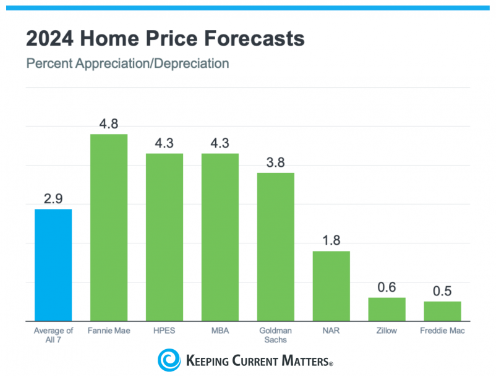
With the latest expert projections, this is what we can gather: home prices will continue to climb moderately for most markets around the country.
Why are home prices still going up? It all comes down to the number of homes for sale. Jessica Lautz, Deputy Chief Economist at the National Association of Realtors (NAR), puts it simply:
“One thing that seems to be pretty solid is that home prices are going to continue to go up, and the reason is that we don’t have housing inventory.”
While there are more homes on the market compared to the past couple of years, it’s still not enough overall to meet today’s buyer demand. This will keep pushing prices up.
What’s Going to Happen with Mortgage Rates?
The biggest piece of advice you can give to anyone who asks is this: if they’re waiting for rates to go back down to where they were in 2020-2022, they’ll be waiting a long time.
But there is good news: experts project mortgage rates should come down later this year as inflation continues to cool.
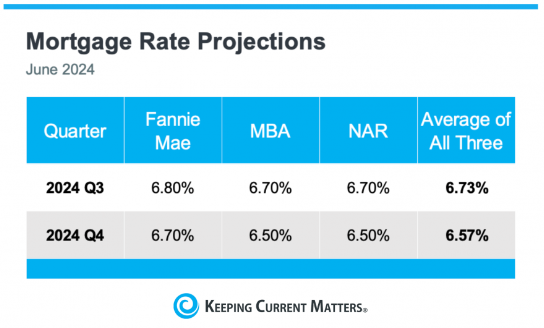
What Will Happen with Home Sales in 2024?
But with more homes available, we’re expecting a few more sales this year compared to 2023.
Lawrence Yun, Chief Economist at NAR, said this:
“In the second half of 2024, look for moderately lower mortgage rates, higher home sales, and stabilizing home prices.”
It won’t be a massive uptick, but it does show that the market is holding steady.
Will the Housing Market Crash This Year?
Ultimately, it comes down to supply and demand.
While you may have seen some recent headlines that say a crash is possible, context is important.
As Business Insider says:
“Though many Americans believe the housing market is at risk of crashing, the economists who study housing market conditions overwhelmingly do not expect a crash in 2024 or beyond.”
Although we’ve seen an uptick in inventory over the past year, we’re still under supply. When the housing market crashed in 2008, there was an oversupply of homes. So, rest easy. There won’t be a crash, and you can use this information to ease any clients’ worries that one could be on the horizon.
WHAT DOES THIS MEAN FOR BUYERS & SELLERS FOR 2024?
But what about the rest of this year?
With experts projecting a rise in inventory and a decline in mortgage rates so long as inflation continues to ease, data suggests we’re heading for a more stable and predictable market than we’ve seen in the last few years.
There is still a lot of motivation for buyers and sellers in the market who are ready, willing, and able, and that’s not expected to change in the six months.
Bottom Line
Industry experts don’t expect any major shifts for the rest of the year. In fact, we’re looking at a steady decline in mortgage rates and a moderate, more normal climb in home prices and sales.
Renovations: Good for Resale?

According to a recent edition of the respected trade publication *Remodeling*, the top 23 major home remodeling projects were highlighted, with five of them offering homeowners more than a 100% return on investment (ROI). If you’re considering a home renovation, here are five standout projects worth contemplating:
1. HVAC Conversion

Getty Images
While electric heat pumps might not be the flashiest upgrade, they are increasingly popular among homeowners looking to replace old fossil-fuel furnaces. Heat pumps offer dual functionality—heating in the winter and cooling in the summer—making them a smart choice for regions with high cooling costs. This eco-friendly option costs about $17,747 on average but promises a remarkable ROI of over 100%, making it a worthwhile investment.
2. Garage Door Replacement
Garage doors play a crucial role in your home’s curb appeal, and upgrading to modern, four-section doors on heavy-duty galvanized steel tracks can make a significant impact. Often, these new doors can work with your existing motorized opener. This upgrade not only enhances your home’s appearance but also offers an impressive ROI of over 100%.
3. Minor Kitchen Remodel
If a full kitchen renovation is beyond your budget, consider a minor remodel to refresh your space. Instead of a complete overhaul, try refacing your cabinet fronts, updating handles and pulls, installing a new countertop or sink, replacing the flooring, and giving the walls a fresh coat of paint. These updates can transform your kitchen and provide an ROI of more than 85%.
4. Enhancing Your Outdoor Living Space
Expanding your living area outdoors is a fantastic way to enjoy your home more. Adding a deck can significantly boost your relaxation and entertainment space. While the cost can vary, with an average around $8,000, the ROI for this project is around 50%. Although this may seem modest compared to other projects, the enjoyment you get from an outdoor space is invaluable.
As you consider your next home improvement project, keep in mind the potential return on investment. Making informed decisions can lead to both financial and personal rewards. For more information on choosing the right renovation projects for your home, feel free to reach out to me. I’m here to help you make the best choices for your home and your future.
Understanding Supplemental Property Taxes After the Death of an Owner in CA

In the realm of real estate, understanding taxes is crucial, especially when it comes to changes in property ownership due to life events like the passing of an owner. If you own property in California, you may have heard of supplemental property taxes but might not fully grasp what they entail, particularly after the death of an owner. Here’s a comprehensive guide to help you navigate this aspect of property ownership.
What are Supplemental Property Taxes?
Supplemental property taxes are additional property taxes that may be due when there is a change in ownership or new construction. In California, when a property changes hands, whether through sale, inheritance, or other means, the county assessor reassesses the property to determine its new taxable value based on the current market value. This reassessment can lead to an increase in property taxes, and the supplemental tax bill reflects this difference.
Understanding Changes in Ownership
When an owner passes away, their property typically goes through a reassessment process to determine its current market value. This reassessment is crucial for calculating the new property taxes owed. It’s important to note that not all changes in ownership trigger reassessment; for instance, transfers between spouses or between parents and children may be excluded from reassessment under certain conditions, such as through Proposition 13 exclusions or Proposition 58.
Navigating the Process
- Notification: The county assessor’s office is typically notified of the change in ownership, often through the recording of a death certificate or other legal documents.
- Reassessment: The assessor then evaluates the property’s current market value. This value is used to calculate the supplemental property tax.
- Supplemental Tax Bill: Once reassessment is complete, the county sends out a supplemental tax bill to the new property owner(s). This bill covers the additional property taxes owed for the period between the date of ownership change and the end of the fiscal year.
- Payment Schedule: Supplemental tax bills are separate from regular property tax bills and have different due dates. It’s essential to pay attention to these deadlines to avoid penalties or interest.
Planning Ahead
Dealing with supplemental property taxes can be complex, especially during periods of grief and transition. Here are some tips to help you navigate this process smoothly:
- Seek Professional Guidance: Consider consulting with a real estate attorney or tax advisor who specializes in California property taxes. They can provide personalized advice based on your specific situation.
- Understand Exemptions and Exclusions: Familiarize yourself with Proposition 13 and Proposition 58 exclusions, which may allow certain transfers to avoid reassessment.
- Budgeting: Plan for potential increases in property taxes when budgeting for expenses related to the property.
- Keep Records: Maintain clear records of all transactions and communications related to the property transfer and reassessment.
Conclusion
While supplemental property taxes can seem daunting, understanding the process can help alleviate confusion and ensure compliance with California’s tax laws. By staying informed and seeking professional guidance when needed, you can navigate these changes with confidence. Remember, each situation is unique, so personalized advice is invaluable in making informed decisions regarding your property taxes.
If you have further questions or need assistance with understanding supplemental property taxes after the death of an owner in California, don’t hesitate to reach out to local experts who can provide clarity and guidance tailored to your needs.
Do Cash-Out Loans Come With A Tax Break?

First you need to understand what a cash-out refinance is. In such a refinance, you swap your existing mortgage loan for a new mortgage in which you borrow a higher amount. You use the found cash to pay for whatever you’d like.
For example, say you owe $150,000 on your current mortgage. You might refinance that for a new mortgage with a balance of $220,000. You’d then receive the extra $70,000 in a lump-sum payment. You could use that money to pay for anything from a kitchen remodel to a master bedroom addition to your child’s college tuition.
There are some limits. The amount you can borrow with a cash-out refinance is limited by the equity in your home. Equity is the difference between what your home is worth and what you owe on your mortgage. If your home is worth $350,000 and you owe $200,000 on your mortgage, you have $150,000 in equity. Your lender will let you borrow a portion of that equity in the form of a cash-out refinance.
You’ll also have to pay closing costs, which could eat into the money available to you. These costs vary but are typically 2% to 5% of the amount that you borrow. You can usually roll these costs into your total loan amount instead of paying them up front.
What about the tax break?
If you use the funds from a cash-out refinance to improve your home, boosting its value, you can claim the interest that you pay on your new loan on your income taxes. For a new loan, you can deduct the interest you pay on up to $750,000 of mortgage debt.
This means that you can deduct the interest you pay if you use your cash-out refinance to pay for a new bathroom, master bedroom addition, second-floor addition or major kitchen remodel. Any home-improvement project that is expected to increase the value of your home will qualify you for the mortgage interest deduction.
If you instead use the funds from a cash-out refinance to pay off your credit card debt, build an emergency fund or pay for a child’s college tuition, you can’t deduct the interest you pay. That’s why the best use for a cash-out refinance, just as for any home equity loan, is to cover the costs of home improvements.
As a reminder, this is just a summary of complicated provisions that are subject to change. Do not make any assumptions on your tax situation before you speak with a qualified tax professional.
Selling Smart: Why a Real Estate Agent Makes All the Difference

If you’re considering selling your house on your own as a “For Sale by Owner” (FSBO), you want to think about if it’s really worth the extra stress. Going this route means shouldering a lot of responsibilities by yourself – and, if you’re not an expert, that opens the door for mistakes to happen and can quickly become overwhelming.
A report from the National Association of Realtors (NAR) shows two key areas where people who sold their own house struggled the most: pricing and paperwork.
Here are just a few of the ways an agent makes those tasks a whole lot easier.
Getting the Price Right
Setting the right price for your house is important. And, if you’re selling your house on your own, two common issues can happen. You might ask for too much money (overpricing). Or you might not ask for enough (underpricing). Either can make it hard to sell your house. According to NerdWallet:
“When selling a home, first impressions matter. Your house’s market debut is your first chance to attract a buyer and it’s important to get the pricing right. If your home is overpriced, you run the risk of buyers not seeing the listing.
. . . But price your house too low and you could end up leaving some serious money on the table. A bargain-basement price could also turn some buyers away, as they may wonder if there are any underlying problems with the house.”
To avoid these problems, team up with a real estate agent. Agents know how to figure out the perfect price because they have a deep understanding of the local housing market. And they’ll use that expertise to set a price that matches what buyers are willing to pay, giving your house the best chance to impress from the start.
Understanding and Performing Paperwork
Selling a house involves a bunch of paperwork and legal documentation that has to be just right. There are a lot of rules and regulations to follow, and that makes it a bit tricky for homeowners to manage everything on their own. Without a pro by your side, you could end up facing liability risks and legal complications.
Real estate agents are experts in all the contracts and paperwork needed for selling a house. They know the rules and can guide you through it all, reducing the chance of mistakes that might lead to legal problems or delays. As an article from First American explains:
“To buy or sell a home you need to accurately complete a lot of forms, disclosures, and legal documents. A real estate agent ensures you cross every ‘t’ and dot every ‘i’ to help you avoid having a transaction fall through and/or prevent a costly mistake.”
So, instead of dealing with the growing pile of documents on your own, team up with an agent who can be your advisor, helping you avoid any legal bumps in the road.
Bottom Line
Selling a house on your own can cost you a lot of time and stress. Give me a call so that I can help with all the finer details, including setting the right price, handling all the paperwork, and so much more. That way I can take that stress off of your plate.
/
Housing Market Forecast: What’s Ahead for the 2nd Half of 2024

As we move into the second half of 2024, here’s what experts say you should expect for home prices, mortgage rates, and home sales.
Home Prices Are Expected To Climb Moderately
Home prices are forecasted to rise at a more normal pace. The graph below shows the latest forecasts from seven of the most trusted sources in the industry:
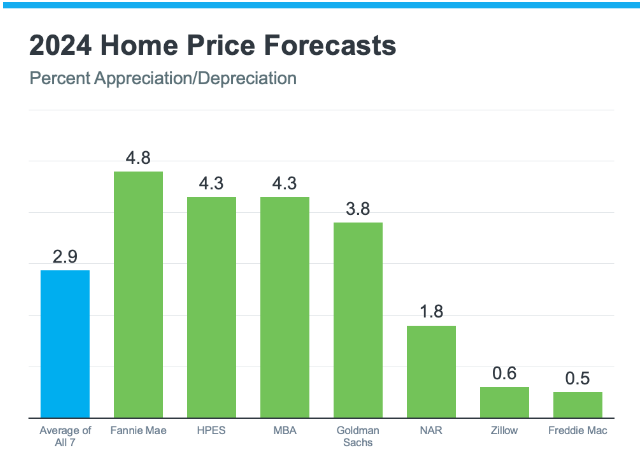
The reason for continued appreciation? The supply of homes for sale. Jessica Lautz, Deputy Chief Economist at the National Association of Realtors (NAR), explains:
“One thing that seems to be pretty solid is that home prices are going to continue to go up, and the reason is that we don’t have housing inventory.”
While inventory is up compared to the last couple of years, it’s still low overall. And because there still aren’t enough homes to go around, that’ll keep upward pressure on prices.
If you’re thinking of buying, the good news is you won’t have to deal with prices skyrocketing like they did during the pandemic. Just remember, prices aren’t expected to drop. They’ll continue climbing, just at a slower pace.
So, getting into the market sooner rather than later could still save you money in the long run. Plus, you can feel confident experts say your home will grow in value after you buy it.
Mortgage Rates Are Forecast To Come Down Slightly
One of the best pieces of news for both buyers and sellers is that mortgage rates are expected to come down a bit, according to Fannie Mae, the Mortgage Bankers Association (MBA), and NAR (see chart below):
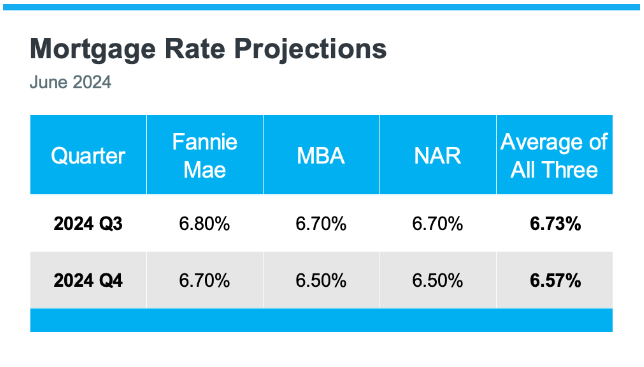
When you buy, even a small drop in mortgage rates can make a big difference in your monthly payments. For sellers, lower rates will bring more buyers back into the market, which can help you sell faster and potentially at a higher price. Plus, it may help you get off the fence, if you’ve been hesitant to sell due to today’s rates.
Home Sales Are Projected To Hold Steady
For 2024, the number of home sales will be about the same as last year and may even rise slightly. The graph below compares the 2024 home sales forecasts from Fannie Mae, MBA, and NAR to the 4.8 million homes that sold last year:
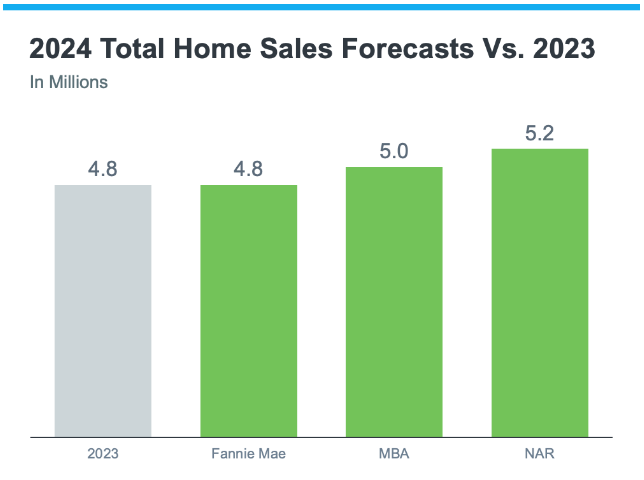
The average of the three forecasts is about 5 million sales in 2024 – a small increase from 2023. Lawrence Yun, Chief Economist at NAR, explains why:
“Job gains, steady mortgage rates and the release of inventory from pent-up home sellers will lead to more sales.”
With more inventory available and mortgage rates expected to go down, a few more homes are expected to be sold this year compared to last year. This means more people will be able to move. Let’s work together to make sure you’re one of them.
Bottom Line
If you have any questions or need help navigating the market, reach out to me, I am happy to help.
/


 Facebook
Facebook
 X
X
 Pinterest
Pinterest
 Copy Link
Copy Link
